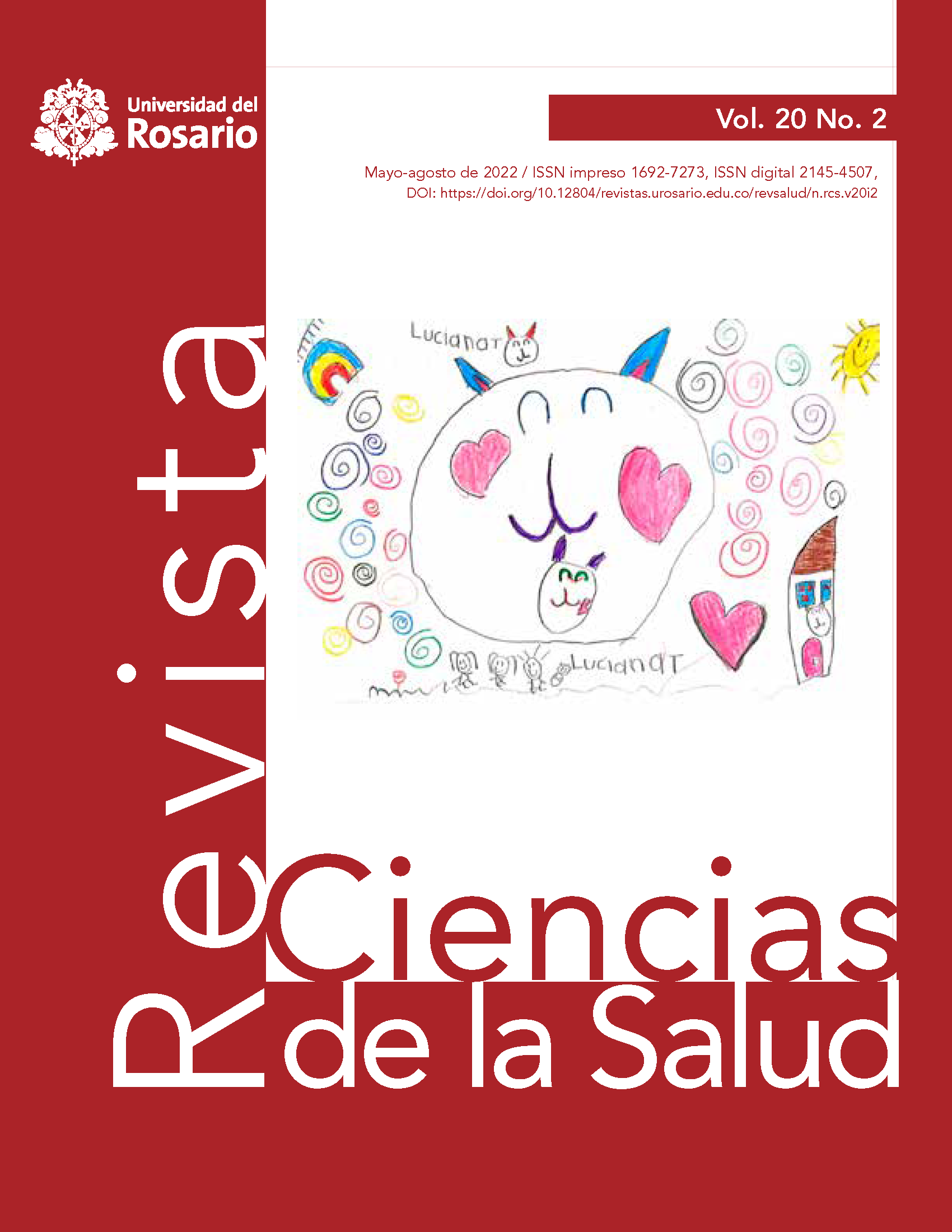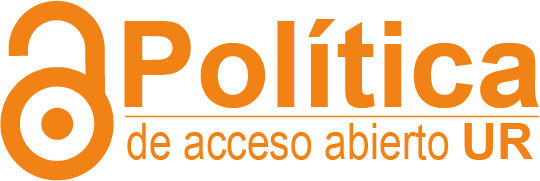COVID-19: un maestro para la humanidad
Barra lateral del artículo
Contenido principal del artículo
Descargas
Worldometer. covid-19 coronavirus pandemic [internet]. 2022 [citado 2022 abr 30]. Disponible en: https://www.worldometers.info/coronavirus/
John Hopkins University of Medicine Coronavirus Resource Center. COVID-19 map [internet]. 2022 [citado 2022 abr 30]. Disponible en: https://coronavirus.jhu.edu/map.html
Wang H, Paulson KR, Pease SA, Watson S, Comfort H, Zheng P, et al. Estimating excess mortality due to the covid-19 pandemic: a systematic analysis of covid-19-related mortality, 2020-21. Lancet. 2022;399(10334):1513-36. https://doi.org/10.1016/S0140-6736(21)02796-3
Organización Mundial de la Salud. Seguimiento de las variantes del SARS-CoV-2 [internet]. 2022 [citado 2022 abr 30]. Disponible en: https://www.who.int/es/activities/tracking-SARS-CoV-2-variants
Duek I, Fliss DM. The covid-19 pandemic – from great challenge to unique opportunity: Perspective. Ann Med Surg. 2020;59:68-71. https://doi.org/10.1016/j.amsu.2020.08.037
Nextstrain Team, gisaid. Genomic epidemiology of SARS-CoV-2 with susmapling focused globally over the past 6 months [internet]. 2022 [citado 2022 abr 30]. Disponible en: https://nextstrain.org/ncov/gisaid/global/6m
Ou J, Lan W, Wu X, Zhao T, Duan B, Yang P, et al. Tracking SARS-CoV-2 Omicron diverse spike gene mutations identifies multiple inter-variant recombination events. Signal Transduct Target Ther. 2022;7(138). https://doi.org/10.1038/s41392-022-00992-2
DeGrace MM, Ghedin E, Frieman MB, Krammer F, Grifoni A, Alisoltani A, et al. Defining the risk of SARS-CoV-2 variants on immune protection. Nature. 2022. https://doi.org/10.1038/s41586-022-04690-5
Fundeú RAE. “Sindemia”, término válido [internet]. 2020 [citado 2022 abr 30]. Disponible en: https://www.fundeu.es/recomendacion/sindemia-termino-valido/
Fronteira I, Sidat M, Magalhães JP, de Barros FPC, Delgado AP, Correia T, et al. The SARSCoV-2 pandemic: A syndemic perspective. One Health;12:100228. https://doi.org/10.1016/j.onehlt.2021.100228
Rewerska-Juśko M, Rejdak K. Social stigma of patients suffering from covid-19: challenges for health care system. Healthcare. 2022;10(2):292. https://doi.org/10.3390/health care10020292
Tsai AC. Syndemics: a theory in search of data or data in search of a theory? Soc Sci Med. 2018;206:117-22. https://doi.org/10.1016/j.socscimed.2018.03.040
Singer M, Bulled N, Ostrach B, Mendenhall E. Syndemics and the biosocial conception of health. Lancet. 2017;389(10072):941-50. https://doi.org/10.1016/S0140-6736(17)30003-X
Singer M, Clair S. Syndemics and public health: reconceptualizing disease in bio-social context. Med Anthropol Q. 2003;17(4):423-41.
Pryor S, Dietz W. The covid-19, obesity, and food insecurity syndemic. Curr Obes Rep. 2022. https://doi.org/10.1007/s13679-021-00462-w. Online ahead of print.
Oliu-Barton M, Pradelski BSR, Algan Y, Baker MG, Binagwaho A, Dore GJ, et al. Elimination versus mitigation of SARS-CoV-2 in the presence of effective vaccines. Lancet Glob Health. 2022;10(1):e142-7. https://doi.org/10.1016/S2214-109X(21)00494-0
Resolve to Salve Lives, Vital Strategies. Manual de estrategias para la covid-19. Coronavirus. 2020 oct [internet]. 2020. Disponible en: https://preventepidemics.org/wp-content/ uploads/2020/05/COVID19Playbook_Spanish.pdf
Lewis D. Superspreading drives the covid pandemic — and could help to tame it. Nature. [internet]. 2021 feb 23 [citado 2022 may 2];590(7847):544-6. Disponible en: https://www.nature.com/articles/d41586-021-00460-x
Wu C, Xu C, Mao F, Xu X, Zhang C. The impact of invisible-spreaders on covid-19 transmission and work resumption. Plos One. 2022;17(1):e0252994. https://doi.org/10.1371/journal.pone.0252994
Liu Y, Yu Q, Wen H, Shi F, Wang F, Zhao Y, et al. What matters: non-pharmaceutical interventions for covid-19 in Europe. Antimicrob Resist Infect Control. 2022;11(1):3. https://doi.org/10.1186/s13756-021-01039-x
Zildzic M, Salihefendic D, Masic I. Non-pharmacological measures in the prevention and treatment of covid-19 infection. Med Arch. 2021;75(4):307-12. https://doi.org/10.5455/medarh.2021.75.307-312
Oraby T, Tyshenko MG, Maldonado JC, Vatcheva K, Elsaadany S, Alali WQ, et al. Modeling the effect of lockdown timing as a covid-19 control measure in countries with differing social contacts. Sci Rep. 2021;11(1):3354. https://doi.org/10.1038/s41598-021-82873-2
Goult E, Sathyendranath S, Kovač Ž, Kong CE, Stipanović P, Abdulaziz A, et al. Analysis of non-pharmaceutical interventions and their impacts on covid-19 in Kerala. Sci Rep. 2022;12(1):584. https://doi.org/10.1038/s41598-021-04488-x
Covid research: a year of scientific milestones. Nature. [internet]. 2021 may 5 [citado 2022 may 1]. Disponible en: https://www.nature.com/articles/d41586-020-00502-w
Haleem A, Javaid M, Vaishya R, Deshmukh SG. Areas of academic research with the impact of covid-19. Am J Emerg Med. 2020;38(7):1524-6. https://doi.org/10.1016/j.ajem.2020.04.022
Norton A, Bucher A, Antonio E, Advani N, Johnston C, Grund H, et al. A living mapping review for covid-19 funded research projects: one year update. Wellcome Open Res. 2022 5:209. https://doi.org/10.12688/wellcomeopenres.16259.5
Tatar M, Wilson FA. The largest vaccination campaign in history: a golden opportunity for bundling public health interventions. J Glob Health. 2021;11:03076. https://doi.org/10.7189/jogh.11.03076
Callaway E. The race for coronavirus vaccines: a graphical guide. Nature [internet]. 2020 [citado 2022 may 1];580(7805):576-7. Disponible en: https://www.nature.com/articles/d41586-020-01221-y
Organización Mundial de la Salud. who-covid19 vaccine tracker [internet]. 2022 [citado 2022 may 1]. Disponible en: https://covid19.trackvaccines.org/agency/who/
Ritchie H, Mathieu E, Rodés-Guirao L, Appel C, Giattino C, Ortiz-Ospina E, et al. Coronavirus pandemic (covid-19). Our World Data [internet]. 2022 abr 30 [citado 2022 abr 30]. Disponible en: https://ourworldindata.org/covid-vaccinations
Jabłońska K, Aballéa S, Toumi M. The real-life impact of vaccination on covid-19 mortality in Europe and Israel. Public Health. 2021;198:230-7. https://doi.org/10.1016/j.puhe.2021.07.037
Chen X, Huang H, Ju J, Sun R, Zhang J. Impact of vaccination on the covid-19 pandemic in U.S. states. Sci Rep [internet]. 2022 [citado 2022 may 1];12(1):1554. Disponible en: https://www.nature.com/articles/s41598-022-05498-z
Moghadas SM, Vilches TN, Zhang K, Wells CR, Shoukat A, Singer BH, et al. The impact of vaccination on coronavirus disease 2019 (covid-19) outbreaks in the United States. Clin Infect Dis. 2021;73(12):2257-64. https://doi.org/10.1093/cid/ciab079
Andrews N, Stowe J, Kirsebom F, Toffa S, Rickeard T, Gallagher E, et al. Covid-19 vaccine effectiveness against the Omicron (B.1.1.529) variant. N Engl J Med. 2022;386(16):1532-46. https://doi.org/10.1056/NEJMoa2119451
Sanders JM, Monogue ML, Jodlowski TZ, Cutrell JB. Pharmacologic treatments for coronavirus disease 2019 (covid-19): A review. JAMA. 2020;323(18):1824-36. https://doi.org/10.1001/jama.2020.6019
Zimmer PC, Wu KJ, Corum J, Kristoffersen M. Tratamientos y medicamentos para el coronavirus: monitoreo de efectividad. The New York Times [internet]. 2020 jul 16 [citado 2022 may 2]. Disponible en: https://www.nytimes.com/es/interactive/2020/science/coronavirus-tratamientos-curas.html
Craven J. Covid-19 therapeutics tracker [internet]. Regulatory Affairs Professional Society. [internet] 2022 [citado 2022 may 2]. Disponible en: https://www.raps.org/news-and-articles/news-articles/2020/3/covid-19-therapeutics-tracker
Fundéu RAE. “Infodemia”, neologismo válido [internet]. 2020 [citado 2022 may 2]. Disponible en: https://www.fundeu.es/recomendacion/infodemia/
Gallotti R, Valle F, Castaldo N, Sacco P, De Domenico M. Assessing the risks of “infodemics” in response to covid-19 epidemics. Nat Hum Behav [internet]. 2020 [citado 2022 may 2];4(12):1285-93. Disponible en: https://www.nature.com/articles/s41562-020-00994-6
Saher R, Anjum M. Role of technology in covid-19 pandemic. Res Appl Artif Intell Mitigate Pandemics. 2021;109-38. https://doi.org/10.1016/B978-0-323-90959-4.00005-5
Shah S, Diwan S, Kohan L, Rosenblum D, Gharibo C, Soin A, et al. The technological impact of covid-19 on the future of education and health care delivery. Pain Physician. 2020;23(4S):S367-80.
Nature Electronics. Digital tech and the pandemic. Nat Electron [internet]. 2021 [citado 2022 may 1];4(1):1-1. Disponible en: https://www.nature.com/articles/s41928-021-00539-3
Phillips S, Williams MA. Confronting our next national health disaster — long-haul covid. N Engl J Med. 2021;385(7):577-9. https://doi.org/10.1056/NEJMp2109285
Nalbandian A, Sehgal K, Gupta A, Madhavan MV, McGroder C, Stevens JS, et al. Post-acute covid-19 syndrome. Nat Med [internet]. 2021 [citado 2022 may 2];27(4):601-15. Disponible en: https://www.nature.com/articles/s41591-021-01283-z
Brodin P, Casari G, Townsend L, O’Farrelly C, Tancevski I, Löffler-Ragg J, et al. Studying severe long covid to understand post-infectious disorders beyond covid-19. Nat Med [internet]. 2022 [citado 2022 may 2];1-4. Disponible en: https://www.nature.com/articles/s41591-022-01766-7
Katzourakis A. covid-19: endemic doesn’t mean harmless. Nature [internet]. 2022 [citado 2022 may 2];601(7894):485. Disponible en: https://www.nature.com/articles/d41586-022-00155-x
Grange ZL, Goldstein T, Johnson CK, Anthony S, Gilardi K, Daszak P, et al. Ranking the risk of animal-to-human spillover for newly discovered viruses. Proc Natl Acad Sci. 2021;118(15):e2002324118. https://doi.org/10.1073/pnas.2002324118
Lawler OK, Allan HL, Baxter PWJ, Castagnino R, Tor MC, Dann LE, et al. The covid-19 pandemic is intricately linked to biodiversity loss and ecosystem health. Lancet Planet Health. 2021;5(11):e840-50. https://doi.org/10.1016/S2542-5196(21)00258-8
Assefa Y, Gilks CF, Reid S, van de Pas R, Gete DG, Van Damme W. Analysis of the covid-19 pandemic: lessons towards a more effective response to public health emergencies. Glob Health. 2022;18(1):10. https://doi.org/10.1186/s12992-022-00805-9
Have H ten. Global bioethics: an introduction. London: Routledge, Taylor & Francis Group; 2016.
Detalles del artículo

Esta obra está bajo una licencia internacional Creative Commons Atribución-NoComercial-SinDerivadas 4.0.
Los manuscritos postulados a la Revista Ciencias de la Salud deben ser originales e inéditos y no deben estar simultáneamente en proceso de publicación en otras revistas, compilaciones o cualquier otro medio de publicación. Los derechos de autor serán de la Universidad del Rosario. Cuando el autor quiera publicar el manuscrito en otra publicación, deberá pedir a la Editorial de la Universidad del Rosario los permisos correspondientes. De igual forma, cuando la Revista Ciencias de la Salud esté interesada en publicar artículos que ya han sido publicados en otras revistas, procederá a solicitar los permisos correspondientes en la editorial donde se realizó la primera publicación.
Bajo una Creative Commons Attribution License los autores pueden compartir el trabajo con un reconocimiento de la autoría del trabajo y la publicación inicial en esta revista.
Artículos más leídos del mismo autor/a
- Yolanda Torres de Galvis, Carlos Enrique Trillos Peña, La enseñanza de la epidemiología integrada a las Facultades de Ciencias de la Salud , Revista Ciencias de la Salud: Vol. 7 Núm. 1 (2009)
Artículos similares
- Diana Fernanda Loaiza-Buitrago, Shirley Tombé-Reyes, Victoria Eugenia Estrada-Trujillo, Determinación social del consumo de frutas y verduras en Florida (Valle del Cauca, Colombia, 2018) , Revista Ciencias de la Salud: Vol. 21 Núm. 2 (2023): Revista Ciencias de la Salud
También puede {advancedSearchLink} para este artículo.




